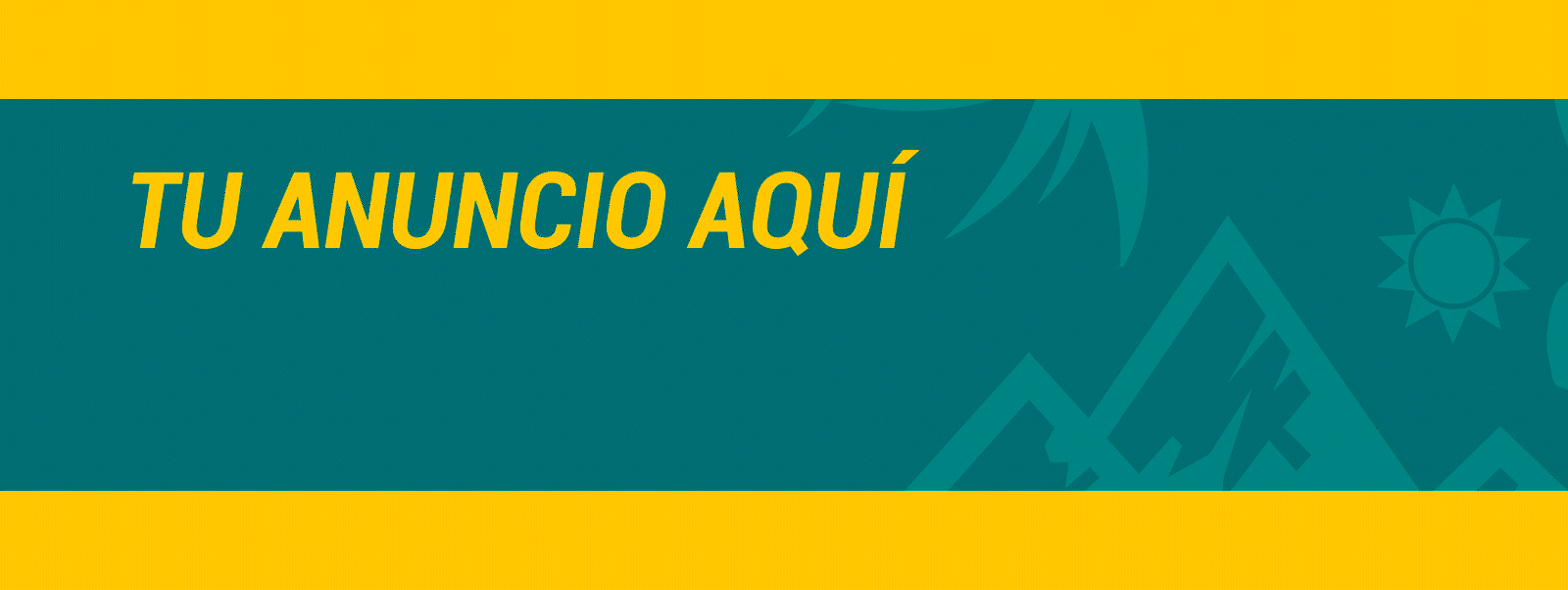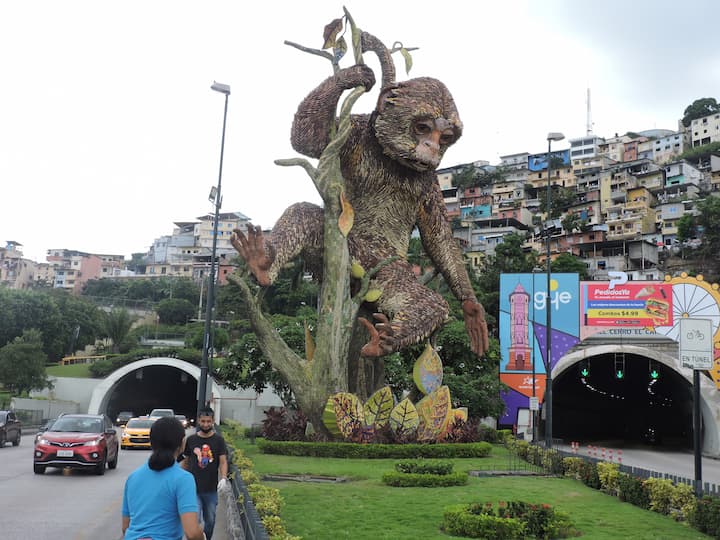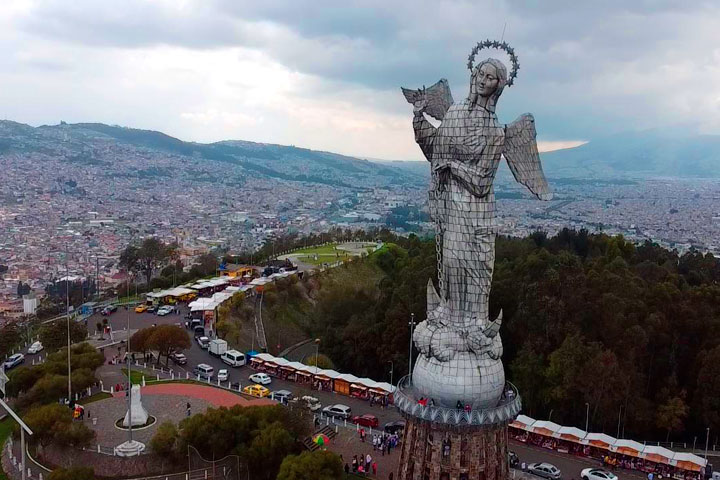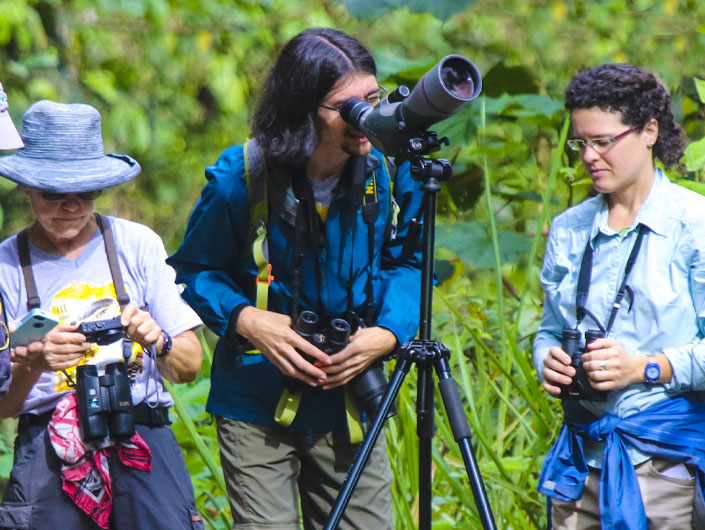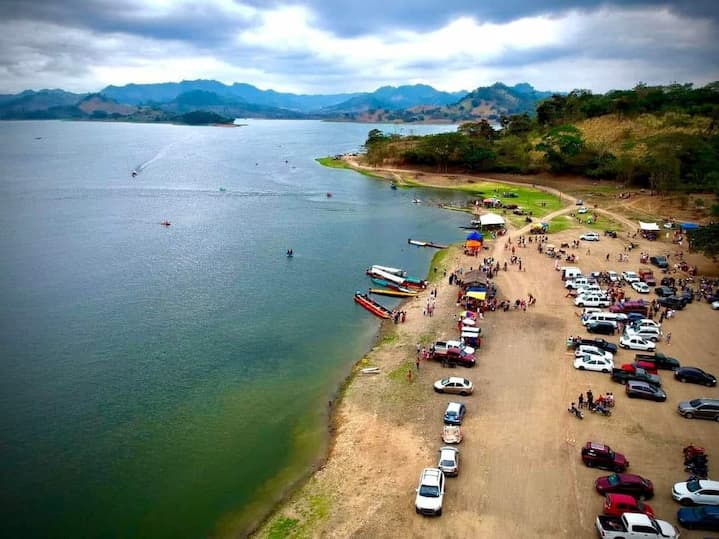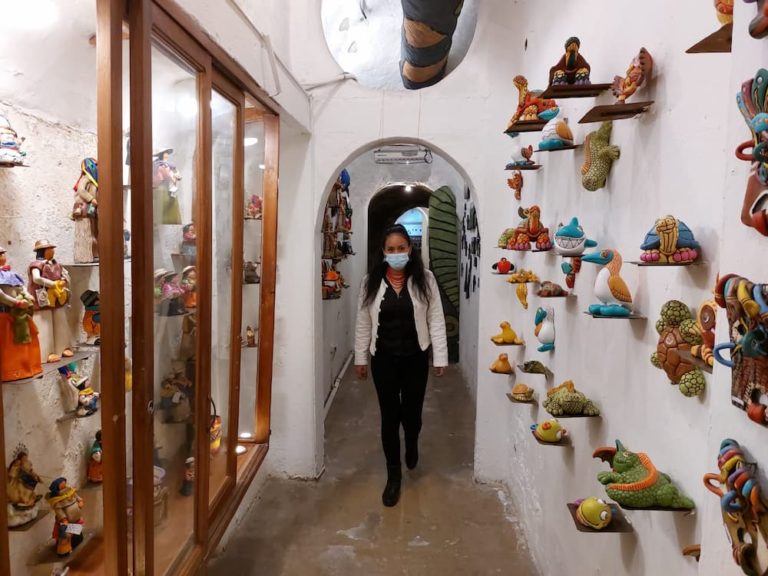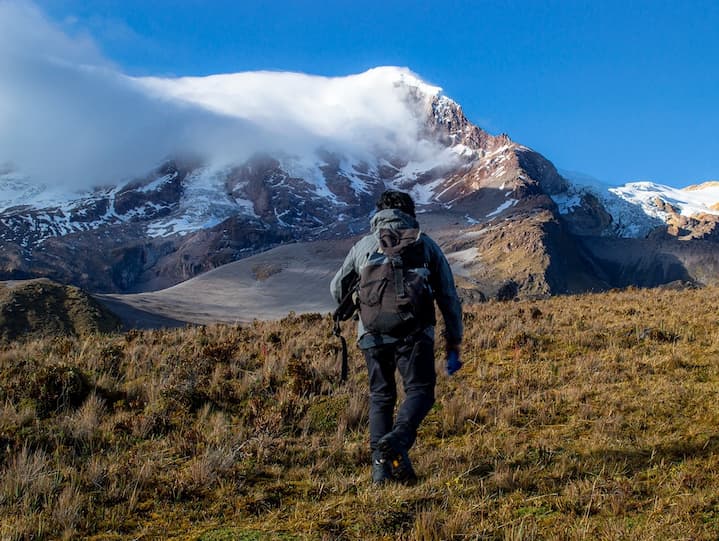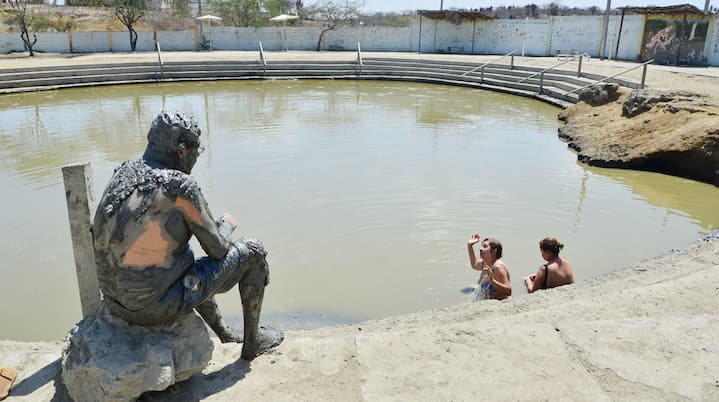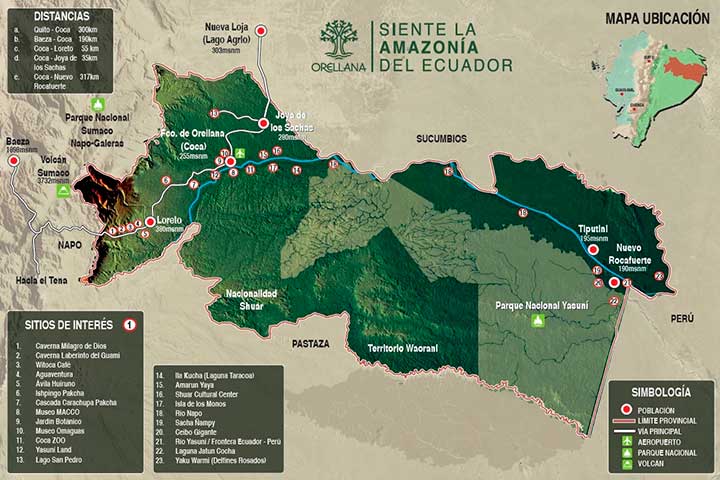His playful figure hangs from a tree almost the same size as himself. It appears to balance with both legs and one arm in the air. It is the Mono Machín in Guayaquil it is a beloved sculpture, 12 meters high. It dominates a green area between the entrance and exit tunnels of the city center, under the Carmen and Santa Ana hills.
The figure is even taller than the palm trees, than other trees in the area. Its color, brown, yellow and some variations in tone, draws the attention of drivers and passengers of cars that cross quickly, including the Metrovía, the city's mass transportation system. To see the Mono Machín, some ignore the colorful houses that hang from the hill or The Point building, the tallest in Guayaquil to date.
The Mono Machín is a 12-meter-high sculpture that has become a tourist icon of the Pearl of the Pacific, as this city is known, founded in 1534 and which has risen after enduring fires, plagues and other calamities.
It is a monument that attracts so much attention that there are drivers who park their vehicles almost 200 meters before so that their companions can fight the cars to move along the central parterre of the avenue and get to be photographed with the machín monkey sculpture, a species of primate of Guayaquil and the region, very playful.
That figure has had moments of setback. Ever had a driver nearly crashed on their bases; On many occasions, posters have been placed to call attention to some issue; Just in the second week of June 2022, a group of university students hung some ropes from the jumpsuit with a sign that said 'No more loose ends'. It was the day of the oceans and it called for not leaving ropes for aquatic species to get entangled.
The Mono Machín is on postcards of Guayaquil, it is recognized not only in the country but abroad. For this reason, TURISEC has dialogued with five characters from different fields to give all the meaning to this icon.
"The sculpture required 110,000 small multicolored ceramic pieces on an iron and cement structure," says Manuel Astudillo, a sculptor who also adds that the Mono Machín, since its inauguration in 2011, has given more relevance to the history of Guayaquil. , as a primate that lives in the forests of Guayas and other coastal provinces of Ecuador.
Environmental awareness by monkey
Erick Cruz, a biologist, points out that Machín welcomes every tourist and driver who comes to the city. "The interest is based on strengthening among the inhabitants and tourists an environmental awareness so that they are the ones who value and respect the essential fauna and flora of the city.
" Cruz says that the primate, represented in ceramic and cement at the entrance to the tunnels, is in danger of extinction; there would be few copies left and outside the city. This fact means that the sculpture has served for the primate to become immortalized as an image that represents the city and is the pride of its inhabitants.
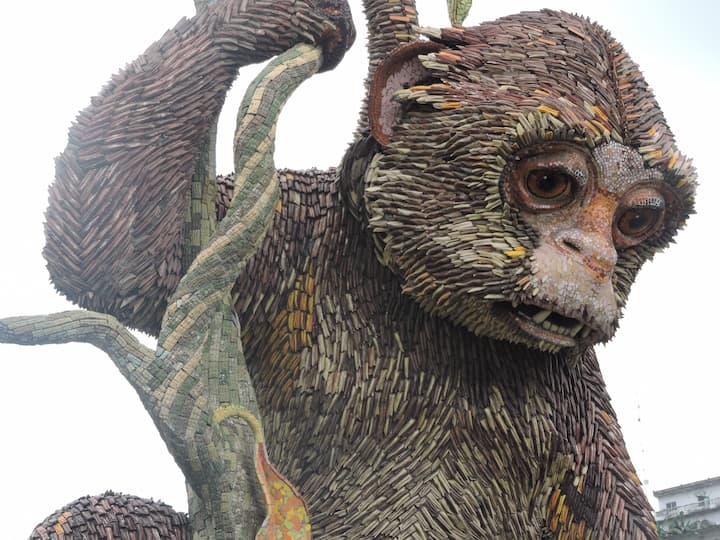
Due to its location, at the entrance of the Cerro del Carmen tunnel, Mono Machín welcomes those who go to the center.
Species valued by a king
The historian Raúl Sánchez reports that King Carlos II of Spain, at the time distinguished the Manchín monkey as an emblematic icon of Guayaquil.
Machín, pampered by tourists
Guayaquil tour operators classify the sculpture as the symbol of tourism. A representative of the Castro Tour travel agency, for example, states that the figure is one of the most named and promoted in its tourist services. “It is a symbol of the city, of our beautiful Guayaquil. It is nice, different, amazing (astonishing), which is worth contemplating for how fun it is”, he details.
He adds that nationals and foreigners go through the site and photograph it, "despite the fact that it is at the entrance of the tunnel, tourists still stop and are trapped by the colors and height of the image."
Distortion of meaning
Ricardo Cabrera, president of the Corporation of Coastal Tourism Professionals, states that the distortion of the history of the mono machín and others gave rise to a name for the people of Guayaquil and even that distortion became regionalist. "Here in Ecuador they call a monkey who was born in Guayaquil, but Ecuadorians do not know that this nickname is used by Colombians and Peruvians to call Ecuadorians yes," he says.
But Mono Machín continues with his romp. It seems that he is posing for photos, alone or accompanied by visitors who even walk a long way to reach his plants. (I)

